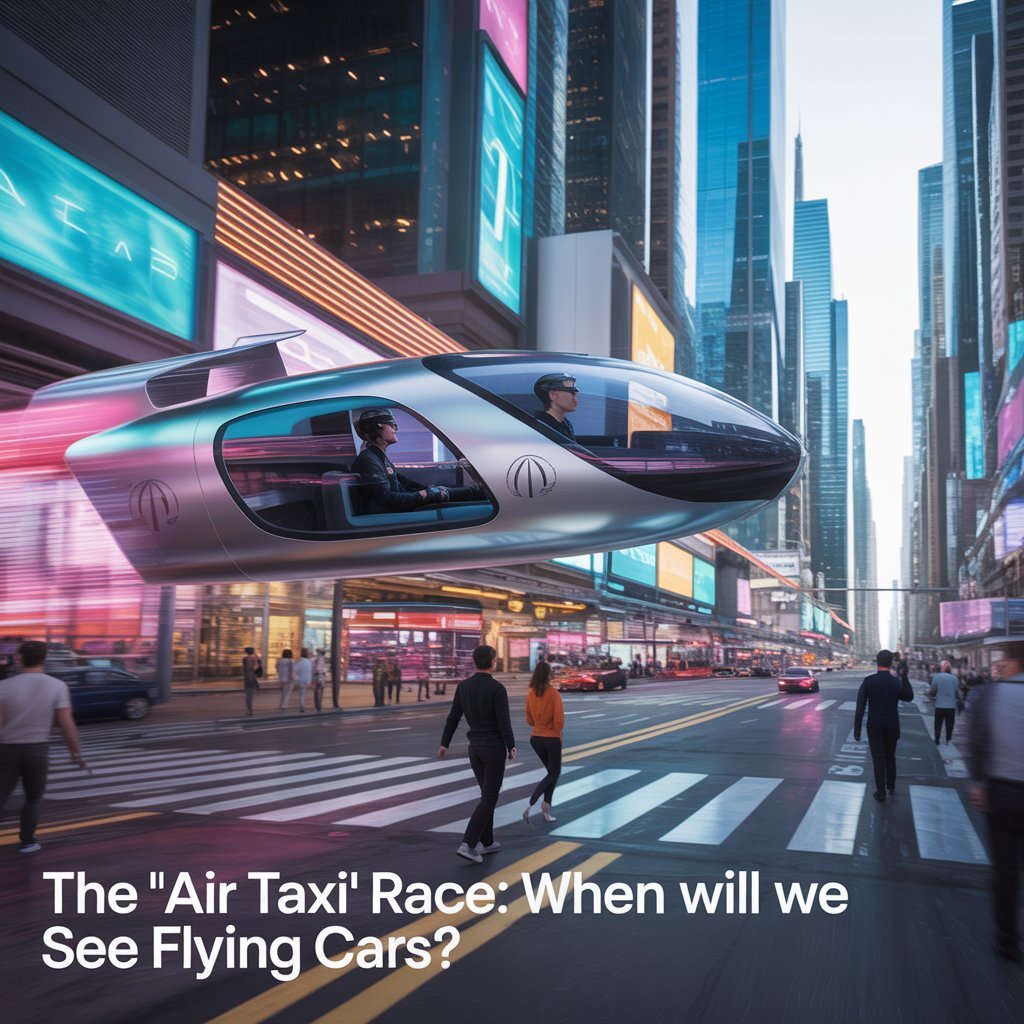1. Introduction: From Sci-Fi to Startup Fever
For nearly a century, flying cars symbolized the future from The Jetsons to Blade Runner. Today, that fantasy is inching toward reality, thanks to a surge in electric vertical takeoff and landing (eVTOL) aircraft. Companies like Joby Aviation, Archer Aviation, and Lilium have raised billions, partnered with major airlines, and even secured preliminary regulatory approvals.
But skepticism remains. Are flying taxis a 2025 reality or a 2030+ pipe dream? To answer that, we’ll examine:
- The key players and their progress,
- The technology powering eVTOLs,
- The biggest roadblocks (from batteries to bureaucracy),
- Realistic timelines for commercialization.
Let’s dive in.
2. The Players: Who’s Winning the Air Taxi Race?
Joby Aviation: The FAA’s Favorite
- Backed by Toyota and Uber, Joby is the furthest along in FAA certification (Stage 4 of 5 as of 2024).
- Its 5-seat aircraft boasts a 150-mile range and speeds of 200 mph, with near-silent propellers.
- Deployment Plans: Targeting 2025 launches in Dubai and New York, with Uber Elevate integration.
Archer Aviation: The United Airlines Bet
- United pre-ordered 200 Archer Midnight aircraft for routes like NYC to Newark Airport (10-minute flights).
- Key Innovation: Tilt-rotor design for smoother transitions between hover and forward flight.
- Timeline: Aiming for FAA certification by late 2025, with commercial ops by 2026.
Other Contenders
| Company | Key Feature | Backers | Target Launch |
| Lilium | Jet-powered, 185-mile range | SpaceX alumni, Qatar Airways | 2026 |
| EHang | Autonomous, no pilot | Chinese gov’t | 2024 (China) |
| Volocopter | Helicopter-like design | Mercedes, Geely | 2024 (Paris Olympics) |
Analysis: Joby leads in regulatory progress, but Archer and Volocopter may deploy first in niche markets.
3. The Technology: How Do eVTOLs Actually Work?
Electric Propulsion vs. Helicopters
- Helicopters: Loud, expensive ($500–$1,000/hour), and require highly trained pilots.
- eVTOLs: Use distributed electric propulsion (multiple small rotors) for:
- Quieter operation (~65 dB vs. 85 dB for helicopters).
- Lower maintenance (no complex transmission systems).
- Zero emissions (critical for urban ESG goals).
The Battery Problem
- Current lithium-ion batteries provide ~100 Wh/kg, but eVTOLs need ~400 Wh/kg for optimal range.
- Solutions in Development:
- Solid-state batteries (Toyota’s partnership with Joby).
- Hydrogen fuel cells (Airbus’s CityAirbus project).
Noise: The Make-or-Break Factor
Urban acceptance hinges on noise levels. Joby’s aircraft is 100x quieter than a helicopter at 1,000 feet—comparable to a dishwasher.
4. Roadblocks to Reality
1. Regulation: The FAA’s Slow March
- The FAA’s Part 135 certification for air taxis is rigorous. Joby’s 5-stage process won’t finish until 2025 at earliest.
- Europe is ahead: EASA approved Volocopter’s design in 2022, with flights planned for the 2024 Paris Olympics.
2. Infrastructure: Where Do You Take Off?
- Vertiports (mini helipads for eVTOLs) must be built in cities. Blade (NYC) and Skyports (London) are early leaders.
- Air Traffic Control: NASA is testing UTM (Urban Air Mobility) systems to avoid mid-air collisions.
3. Public Trust: Fear of the “Flying SUV”
- A 2023 Deloitte survey found only 35% of Americans would ride an air taxi.
- Top Concerns: Safety (51%), noise (29%), and cost (20%).
4. Cost: Will It Be for the 1%?
- Initial fares may hit $3–$5 per mile (~$100 for a 20-mile trip)—comparable to helicopter charters.
- Goal: $1 per mile by 2030 (competitive with Uber Black).
5. When Will We Actually See Them?
Optimistic Timeline (2025–2027)
- 2024–2025: Limited demo flights (e.g., Volocopter at Paris Olympics).
- 2026–2027: First commercial routes (NYC–airports, Dubai tourist routes).
Pessimistic Timeline (2030+)
- Battery delays or FAA hurdles could push scaling to the next decade.
- McKinsey’s Prediction: Just 3,000 eVTOLs globally by 2030 (vs. ~1M Uber cars today).
Expert Quote:
“The tech is ready, but cities aren’t. We’ll see pockets of adoption, luxury routes and medical transport—before daily commutes.”
— Robin Riedel, McKinsey Center for Future Mobility
6. Beyond Taxis: Other Use Cases
Emergency Medical Transport
- Zipline already uses drones to deliver blood in Rwanda. eVTOLs could expand this to organs or ICU patients.
Cargo Delivery
- Amazon Prime Air and Wing (Alphabet) are testing small drones. Larger eVTOLs could handle pallet-sized loads.
Military Applications
- The U.S. Air Force’s Agility Prime program is testing eVTOLs for troop transport and logistics.
7. Conclusion: The Future Is Close—But Not Here Yet
The air taxi race isn’t just about technology, it’s about building an ecosystem. While companies like Joby and Archer are sprinting toward certification, infrastructure, regulation, and public trust are lagging.





